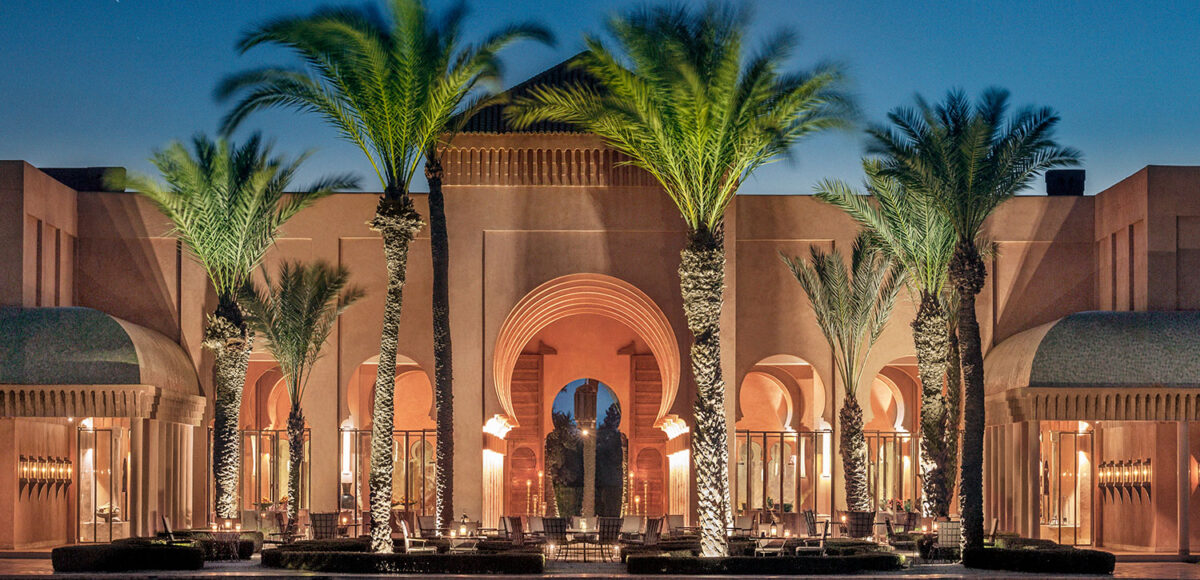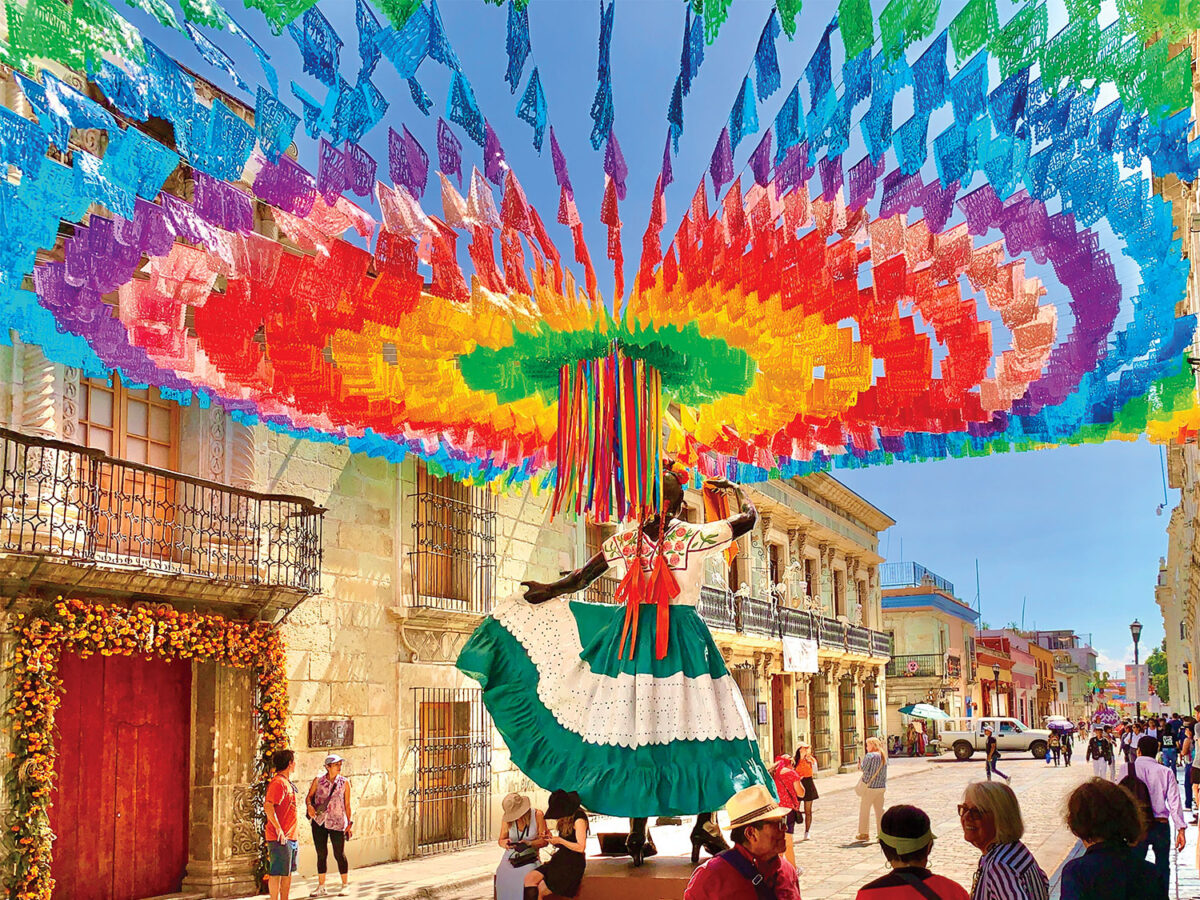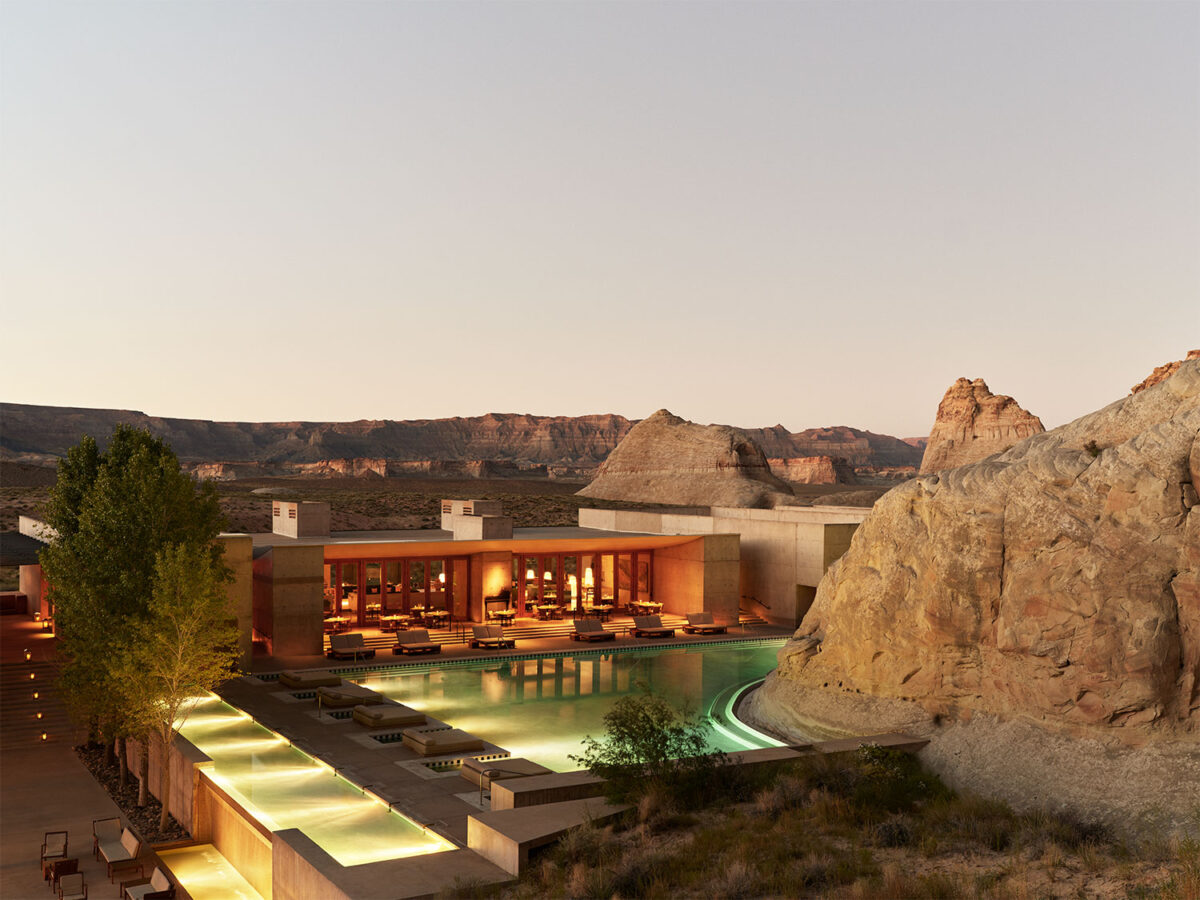A bit bohemian in its soul, a bit varied in its cultural history, and entirely seductive in every way, Marrakech is the kind of city that gets under your skin and makes you want to return again and again. Whether visiting for the first time or the 30th time, the city’s rugged topography, with the sometimes-snow-capped Atlas Mountains in the distance; vibrant visual delights, from the red-clay walls that make up most of the city’s architecture to the copper-cut-out lanterns that come on at night and cast decorative shadows; and endless energy, from the bustling medina and souk to the calming energy of the earth in the remote areas—it’s impossible not to be in awe of this North African oasis.
Located just 20 minutes from the international airport and 12 minutes from the center of town, Amanjena, which translates to “peaceful paradise,” feels a world away from everything. Arrive through its gates and instantly enter a serene Moroccan fantasy world, where the open-air reception is furnished with antiques and decorated with a display of colorful spices from the region. Guests are immediately captivated by the awe-inspiring water feature outside. The black-bottom tranquility pool sets the tone for the entire resort—amplifying the architecture and lighting of the property at night when it reflects off the water—and juxtaposes the desert landscape, creating what seems like an impossible oasis.
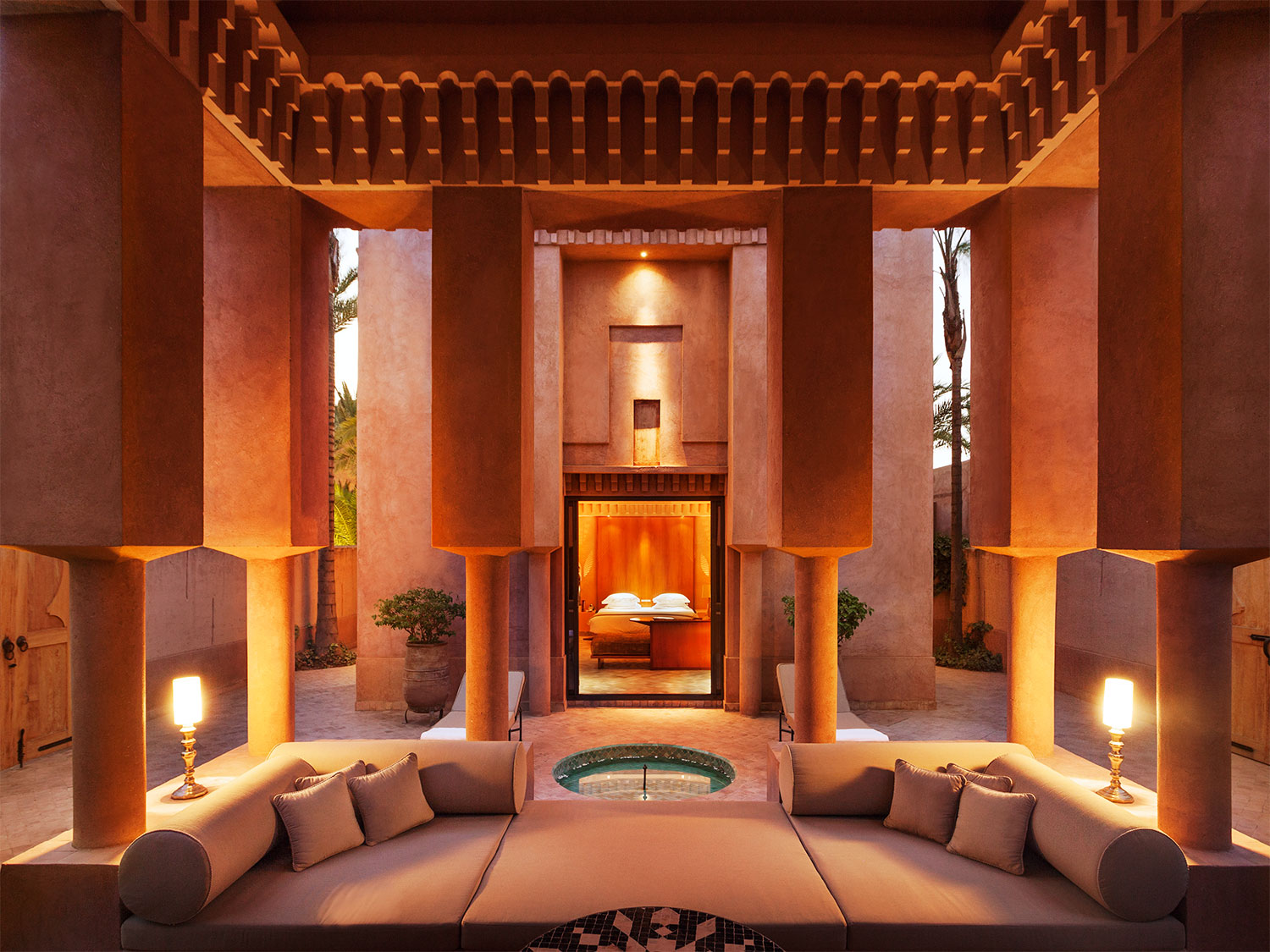
Photos Courtesy of Aman
“The first time I was at Amanjena was about 15 years ago with my wife,” says Cape Town, South Africa–based architect Stefan Antoni, principal and founder of SAOTA Architecture and Design, which is responsible for everything from mansions in Bel-Air to hotels across Africa and Europe. “I was an early ‘Amanjunkie’ and had been to a lot of the early Aman hotels in Asia. Amanjena was built in 2000, but it feels centuries old and very much of its destination, which is a testament to its architect, Ed Tuttle [who also designed the first Aman, Amanpuri, in Phuket].”
Indeed, so much of Amanjena’s appeal rests in its ability to pull the guest into the destination and immediately feel a connection to the local architecture, the landscape, and the soul of Marrakech. And, for its next phase, just a handful of special villas at Amanjena will allow its esteemed guests the privilege of owning a piece of the luxury oasis. Sprawling across 13 acres, Amanjena currently features 40 rooms, ranging from 1,883 to 12,163 square feet, a spa with four treatment rooms and two Turkish hammams, two clay tennis courts, and access to the adjacent Amelkis golf course and two additional nearby golf courses. There are also two signature restaurants, one serving traditional Moroccan cuisine in an intimate area centered around a marble fountain, and one serving informal Japanese fare for three meals daily.
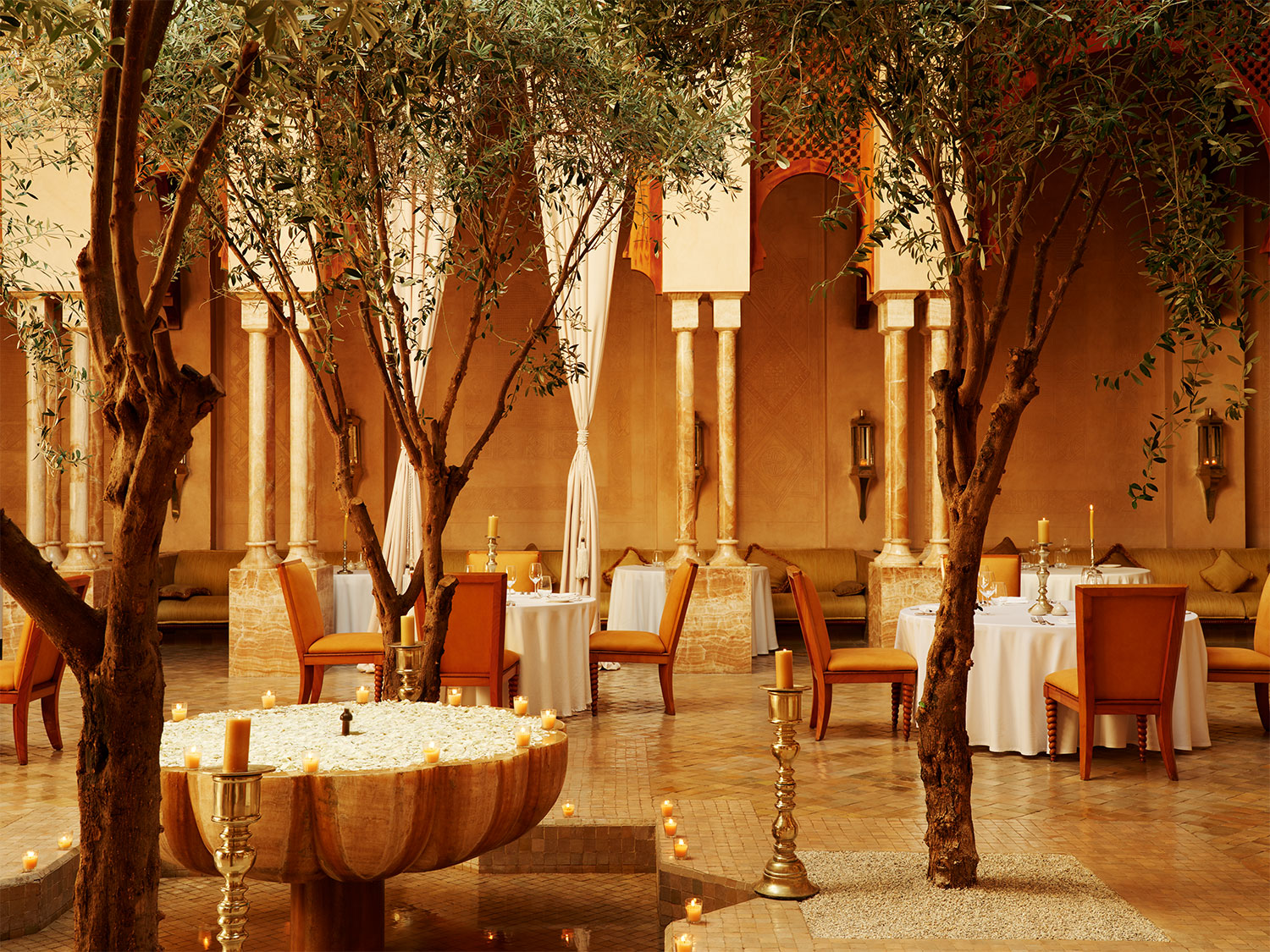
“Right now, Amanjena is this hidden gem of a property, and we had the fortune of there not being much directly around it,” says Antoni. “The unused land next to it was the perfect opportunity to create something truly special.”
The homes that Aman is creating will consist of elegantly and harmoniously designed three- to six-bedroom villas, staying true to the brand’s ethos. “So many of the hotels in Marrakech are elaborate and over the top, but Aman is more Zen. The DNA of the brand is very unique, so to that end, we’re carrying on with a subdued feel,” says Antoni. “From what I’ve experienced at the other Amans around the world, there’s always a quietness and sense of balance and symmetry. The architecture is very considered, so that you can feel calm and really let go.”
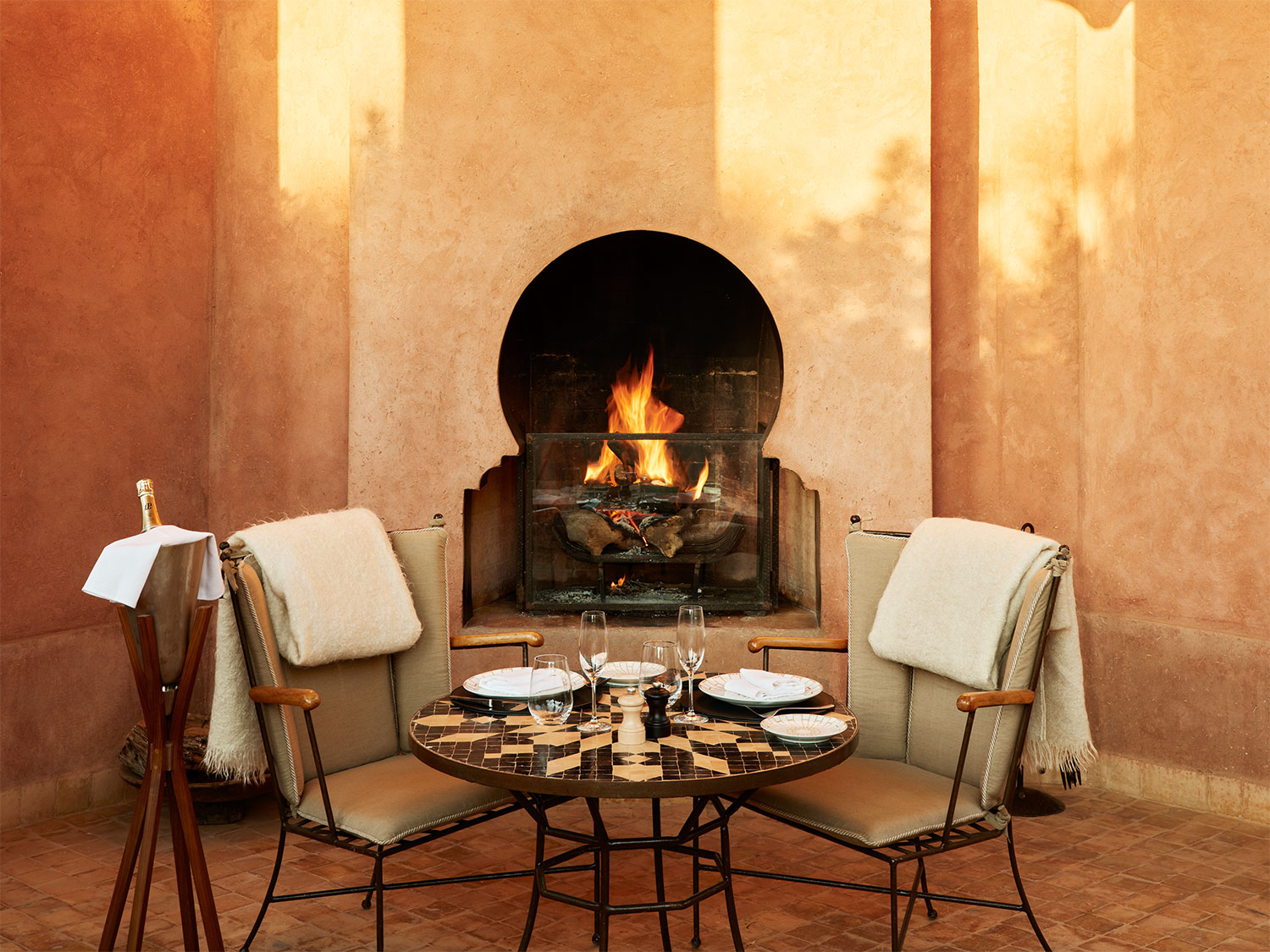
The residences at Amanjena include three villa layouts, ranging from 16,400 to 24,300 square meters in size, all with private gardens, swimming pools and open walls to immerse the owner in the surroundings.
“When you’re in the city center [of Marrakech], you see these tall walls, which are made of local mud with the texture of straw and grass in them. They have these smallish openings, where you’ll get a glimpse of some incredible oases inside,” says Antoni. “For us to extract that essence, what Marrakech architecture is all about, was really important, but without being a pastiche or copy of the traditional—it’s our interpretation of that.”
The residences will feature similar architectural walls that are found throughout Marrakech, as well as a dusty design palette with accents of lime-washed oak, stone and patinated bronze, which complement honed travertine tiles and Tadelakt plaster walls. The resulting homes honor the region with traditional materials but contemporary layouts, with indoor spaces that flow seamlessly onto private terraces and roof gardens by way of pools and courtyards.
“We spent a lot of time studying other Aman hotels, specifically their layouts and connections and the sequencing of spaces,” says Antoni. “As you enter the villas, you will experience the unraveling of the mystery in the design from the arrival, the layering of the internal spaces and then the garden and water elements … each is laid out like a palace, so that they can condense and expand as needed, never feeling too big or too small for the site.”
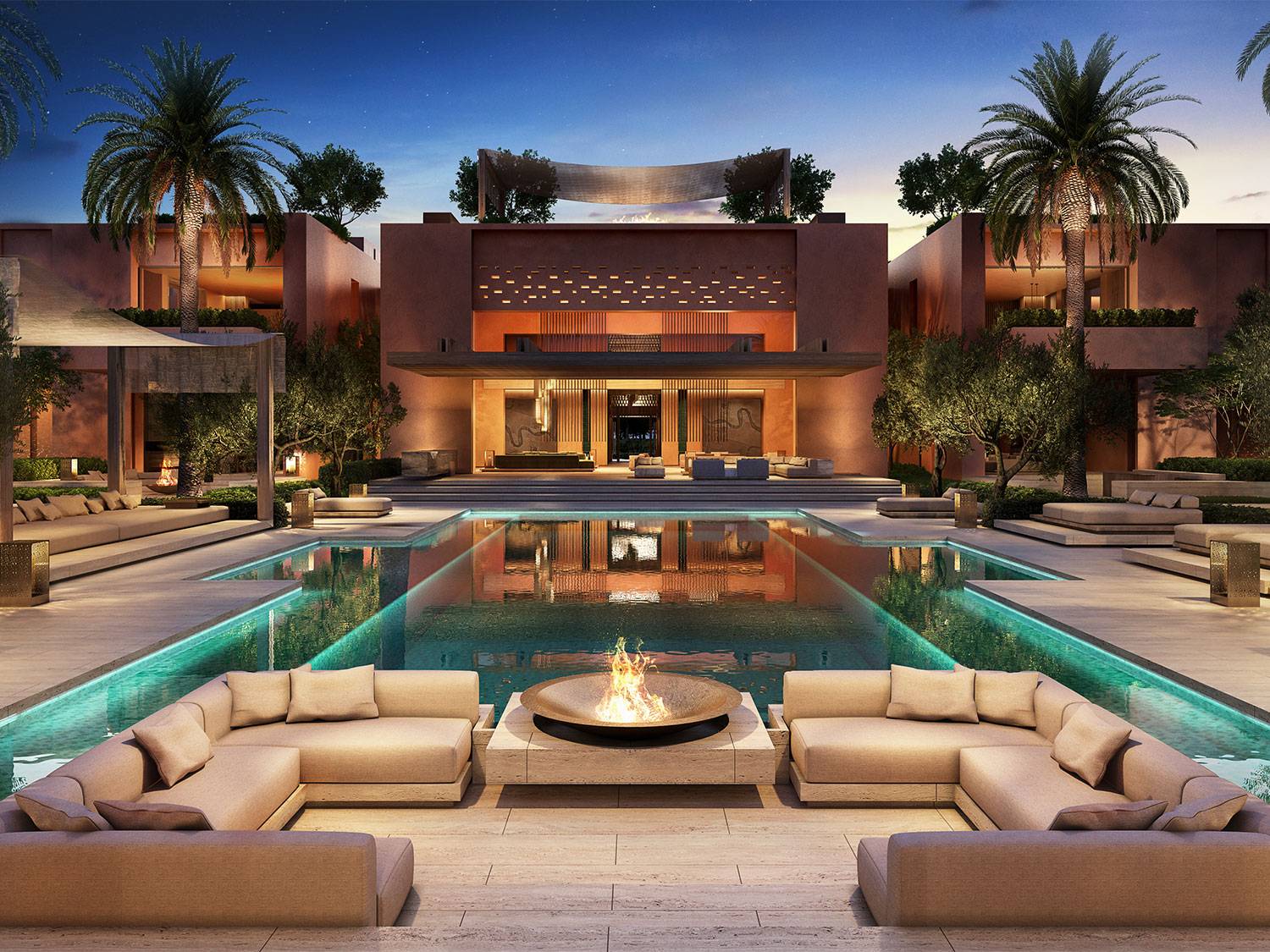
Although Marrakech dates back to 1070 and is steeped in history and authentic charm, it’s also constantly evolving, whether with new museums, restaurants or an increasing number of international visitors who come each year to discover its charms. “Marrakech is so central and close to Europe, but it’s also just one step away from America and one step from Asia,” says Antoni. “It’s a very well-positioned city and very multicultural. Not to mention, it will have the World Cup in 2030, and there’s even an area where you can ski. The region offers so much, but there’s no place better to experience it than at Amanjena.”



